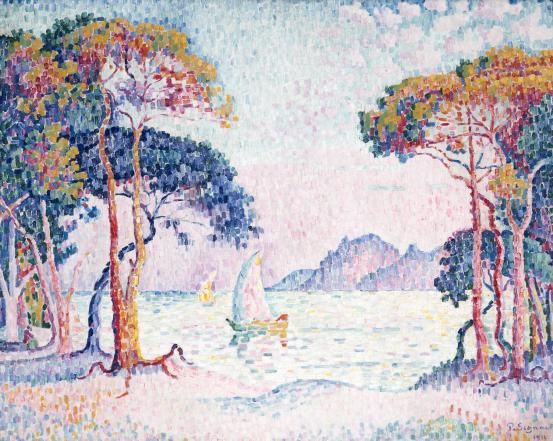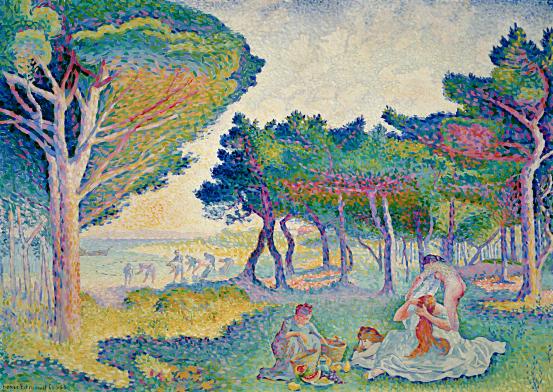exhibition review: radiance – the neo-impressionists

Paul SIGNAC, French: 1863–1935,
‘Juan-les-Pins. Evening (first version)’
(Juan-les-Pins. Soir (première version)),
1914, oil on canvas, 73.0 x 92.0 cm.
Private collection, Image courtesy of the NGV.
“It is this love of beautiful colour which makes us paint like this and not a liking for the point.” – Paul Signac
“This love of beautiful colour” perfectly encapsulates the NGV International’s summer blockbuster, Radiance: The Neo-Impressionists. The exhibition showcases some fine examples of Neo-Impressionist works. Each artwork, composed of layers of unmixed points, is striking in an effervescent way. The exhibit spans the birth and development of the Neo-Impressionist movement in France and Belgium, from the 1880s through to the outbreak of the First World War.
Against a backdrop of economic depression and social uncertainty, the forebears of Neo-Impressionism, Georges Seurat and Paul Signac, began a movement that both challenged and developed the work of the Impressionists. Like Impressionists, the painters in this new movement were engaged in the “study of light”. However, the technique of placing pure colour on the canvas in dots or square brushstrokes separated the movements.

Henri-Edmond CROSS, French: 1856–1910,
‘Mediterranean Shores’ (Bords méditerranéens),
1895, oil on canvas, 65.0 x 92.0 cm.
Collection of Lenora and Walter F Brown, San Antonio, Texas,
Photo: Steven Tucker, Image courtesy of the NGV
The highlights of the exhibit are the works by Signac and Seurat. Radiance traces Signac’s artistic scope, from adorable paintings of watercolour and ink, to mosaic-like landscapes. The images are full of contemporary life, as part of the Neo-Impressionists’ movement away from grandiose and Biblical themes of the past. In contrast to Signac, Seurat more frequently used the point of his brush, to create a finer spread of colour across the canvas. Both artists are well represented on the gallery’s pastel walls. Other standouts include the works of Henri-Edmond Cross, whose paintings evoke both Japanese Prints and elements of the Art Nouveau, and Maximilian Luce, who layered pastel and neon colours in his works, resulting in a beautiful display of light.
The inclusion of “For Kids” plaques throughout the exhibit is also a great touch. These boards provide children (and adults, like me, who know little of the technical elements of art) with simplified but engaging snippets of information about the movement and its painters. They encourage children to look for particular things in the paintings, and to question why the painters have made certain artistic choices.
Radiance: The Neo Impressionists runs until March 17, 2013 at NGV International, St Kilda Road, Melbourne.

